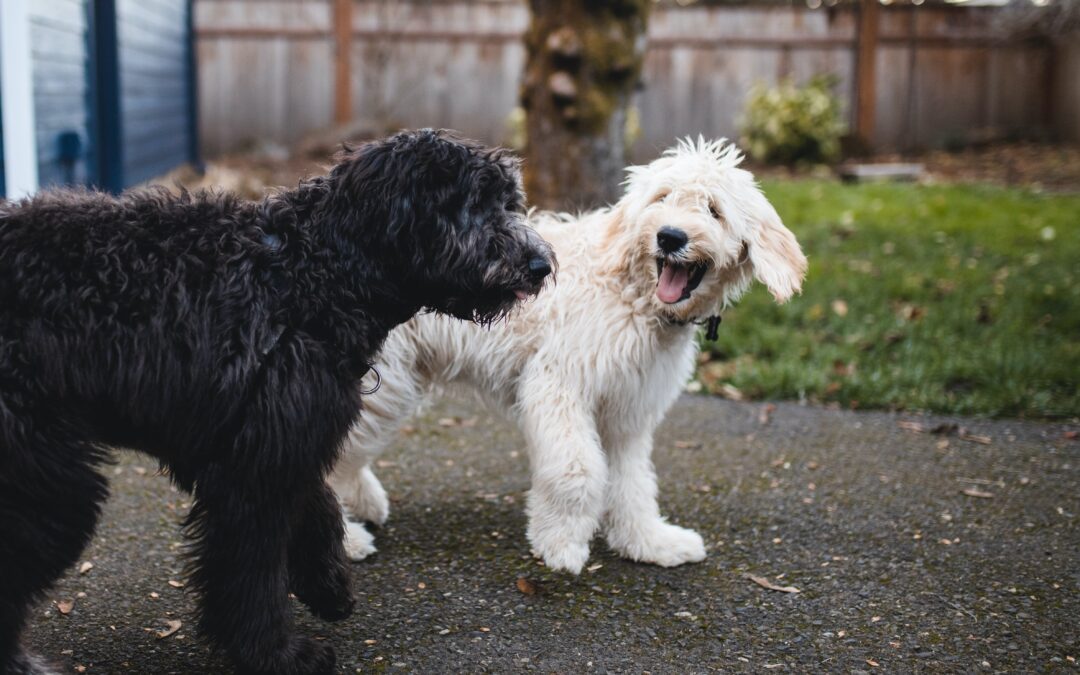I recently saw two beautiful doodles. They had been in a home, but had recently returned to the breeder. Unfortunately the two brothers had been fighting. These were big doodles, 82 and 74 pounds. The owner was scared.
I understand that fear. I had a charpei that fought with all of his house mates and bit my husband in the face. He had come from a breeding situation and had lived in a cage for six months with little human contact and no dog contact. We tried everything, but ultimately decided it was best to euthanize him. (Biting humans only gets worse and there were other issues.)
It can be challenging to manage two dogs that fight, especially when they are brothers and intact. However, with patience, consistency, and the right strategies, it’s possible to help them learn to coexist peacefully. Here are some instructions to help you manage two fighting dogs that are intact brothers:
Separate the dogs: The first step in managing these dogs is to separate them. Keep them in separate rooms or crates when you are not able to supervise them. This will prevent any fights from breaking out when you are not around.
Feed them separately: Make sure to feed the dogs separately. This means putting their food bowls in separate areas of the house, or even feeding them at different times. This will prevent any food-related aggression.
Provide enough exercise: Ensure that both dogs receive plenty of exercise. A tired dog is less likely to become aggressive or anxious. Walk them separately, and give each dog plenty of exercise time.
Don’t play rough with them: Rough play can increase the likelihood of fights breaking out between the two dogs. Avoid roughhousing or wrestling with them, and instead focus on calm playtime activities like fetch or puzzle toys.
Reward good behavior: When the dogs are behaving well together, reward them with treats or praise. This will help to reinforce positive behavior and make it more likely that they will get along in the future.
Consider neutering: Neutering both dogs can significantly reduce their aggressive behavior towards each other and other dogs. We highly recommended neutering. I honestly don’t think this step is optional.
Supervise them closely: It’s important to keep a close eye on the dogs at all times when they are together. Do not leave them unsupervised or let them roam freely around the house or yard without supervision.
Use a leash and muzzle: When walking the dogs together, use a sturdy leash to control them and prevent them from fighting. Consider using a muzzle on one or both dogs to prevent any potential injuries if a fight does break out.
Provide separate living spaces: Consider separating the dogs permanently if they are unable to coexist peacefully. This may mean creating separate living spaces in your home or even finding a new home for one of the dogs.
Avoid situations that trigger fights: Identify situations that trigger the dogs to fight and avoid them. This may include resource guarding (food, toys, etc.) or certain locations in the home or yard.
Seek professional help: I think in these cases a veterinary behaviorist can be a huge help. There are veterinary behaviourist that can do telemedicine now. They can assess the situation and provide you with more specific guidance on how to manage the dogs.
Remember, intact male dogs can be more prone to aggression, especially towards other males. It’s important to take extra precautions when managing two intact male dogs that have a history of fighting. With time and effort, it’s possible to help them learn to coexist peacefully.

